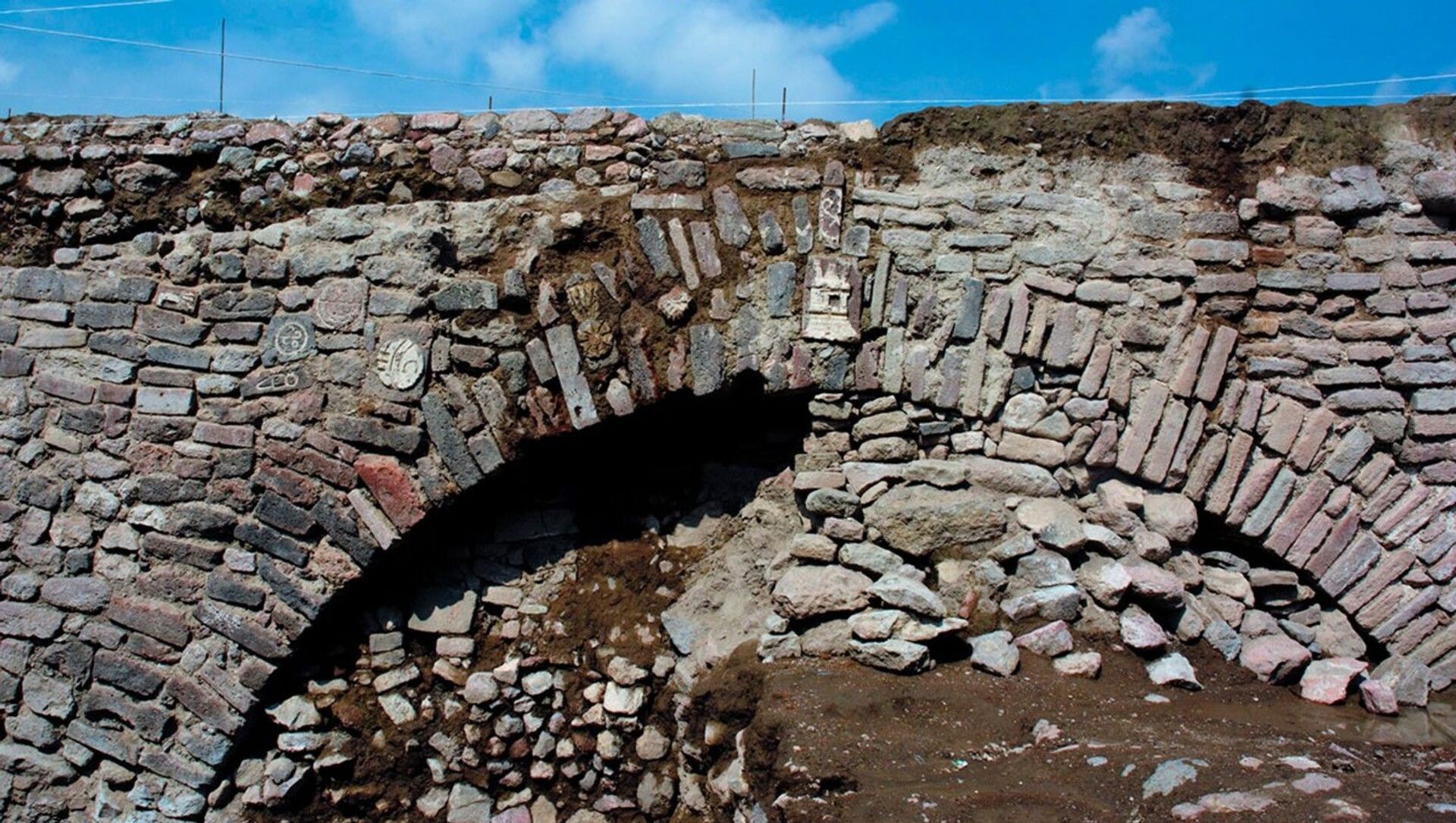https://sputnikglobe.com/20210730/lack-of-funds-force-mexican-archaeologists-to-rebury-historic-400-year-old-tunnel--1083488891.html
Lack of Funds Force Mexican Archaeologists to Rebury Historic 400-Year-Old Tunnel
Lack of Funds Force Mexican Archaeologists to Rebury Historic 400-Year-Old Tunnel
Sputnik International
Archaeologists in Mexico received a full dose of shock in October 2019 in the outskirts of Mexico City after uncovering the entrance of a 17th-century tunnel... 30.07.2021, Sputnik International
2021-07-30T00:52+0000
2021-07-30T00:52+0000
2021-07-30T00:52+0000
latin america
world
newsfeed
mexico
archaeology
tunnel
covid-19
pandemic
https://cdn1.img.sputnikglobe.com/img/07e5/07/1e/1083489038_0:0:1682:950_1920x0_80_0_0_cd4ddd93950567269e6faa16e8236ac1.jpg
It’s no secret that the COVID-19 pandemic has caused serious setbacks to life as it once was, forcing projects to go on permanent standby, and prompting the closure of some small businesses. But now, the effects of the pandemic are also forcing archaeologists in Mexico to rebury a dig site.The reburial was a decision made by Mexico’s government-funded National Institute of Anthropology and History, with the hope that covering the 400-year-old tunnel with dirt once again would effectively preserve the site until enough funds are collected to build an on-site exhibit.The agency further cited concerns regarding potential vandalism and/or looting at the archaeological site in their decision to cover the tunnel once again.The tunnel, which stretches out over 8.4 meters and is adorned with 11 pre-Hispanic petroglyphs and stucco reliefs, serves as an entrance to a 17th-century dike system known as the Albarradon de Ecatepec. As the water levels from the great flood did not recede for some five years, Spanish colonizers at the time chose to bury the system and order the construction of two other dike systems, according to Chávez.However, that decision to bury the site in rocks and ash proved a safe haven for archaeologists in the present day, especially as they were able to take a glimpse of the many carvings that were along the walls of the tunnels. Archaeologists previously indicated that the tunnel was dedicated to Tláloc, the Aztec rain god. Chávez has explained that tunnel carvings were likely etched into the walls by Indigenous laborers who lived in the pre-Hispanic towns of Ecatepec and Chiconautla.
mexico
Sputnik International
feedback@sputniknews.com
+74956456601
MIA „Rosiya Segodnya“
2021
News
en_EN
Sputnik International
feedback@sputniknews.com
+74956456601
MIA „Rosiya Segodnya“
Sputnik International
feedback@sputniknews.com
+74956456601
MIA „Rosiya Segodnya“
latin america, newsfeed, mexico, archaeology, tunnel, covid-19, pandemic
latin america, newsfeed, mexico, archaeology, tunnel, covid-19, pandemic
Lack of Funds Force Mexican Archaeologists to Rebury Historic 400-Year-Old Tunnel
Archaeologists in Mexico received a full dose of shock in October 2019 in the outskirts of Mexico City after uncovering the entrance of a 17th-century tunnel adorned with a variety of carved reliefs of animals and Aztec iconography. Now, despite excavation efforts, officials are having to rebury the historic find.
It’s no secret that the COVID-19 pandemic has caused serious setbacks to life as it once was, forcing projects to go on permanent standby, and prompting the closure of some small businesses. But now, the effects of the pandemic are also forcing archaeologists in Mexico to rebury a dig site.
City officials in Mexico’s Ecatepec had initially intended to turn their newly uncovered archaeological site into a tourist attraction. However, a lack of government funds has cut those dreams, and is prompting specialists to pile the dirt back onto their treasured tunnel.
The reburial was a decision made by Mexico’s government-funded National Institute of Anthropology and History, with the hope that covering the 400-year-old tunnel with dirt once again would effectively preserve the site until enough funds are collected to build an on-site exhibit.
“It must be considered that the worldwide COVID-19 health emergency forced all levels of government to place priority on assigning money to health care for the population,” reads a statement. “For that reason, the archaeological project had to be postponed.”
“It must be considered that the worldwide COVID-19 health emergency forced all levels of government to place priority on assigning money to health care for the population,” reads a statement. “For that reason, the archaeological project had to be postponed.”
The agency further cited concerns regarding potential vandalism and/or looting at the archaeological site in their decision to cover the tunnel once again.
The tunnel, which stretches out over 8.4 meters and is adorned with 11 pre-Hispanic petroglyphs and stucco reliefs, serves as an entrance to a 17th-century dike system known as the Albarradon de Ecatepec.
As the water levels from the great flood did not recede for some five years, Spanish colonizers at the time chose to bury the system and order the construction of two other dike systems, according to Chávez.
However, that decision to bury the site in rocks and ash proved a safe haven for archaeologists in the present day, especially as they were able to take a glimpse of the many carvings that were along the walls of the tunnels.
Archaeologists previously indicated that the tunnel was dedicated to Tláloc, the Aztec rain god. Chávez has explained that tunnel carvings were likely etched into the walls by Indigenous laborers who lived in the pre-Hispanic towns of Ecatepec and Chiconautla.




